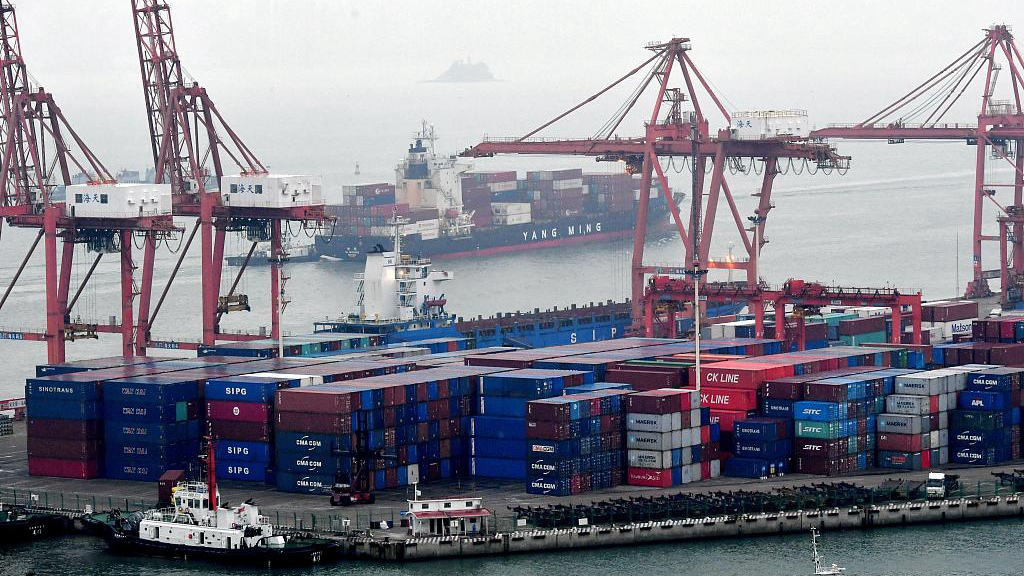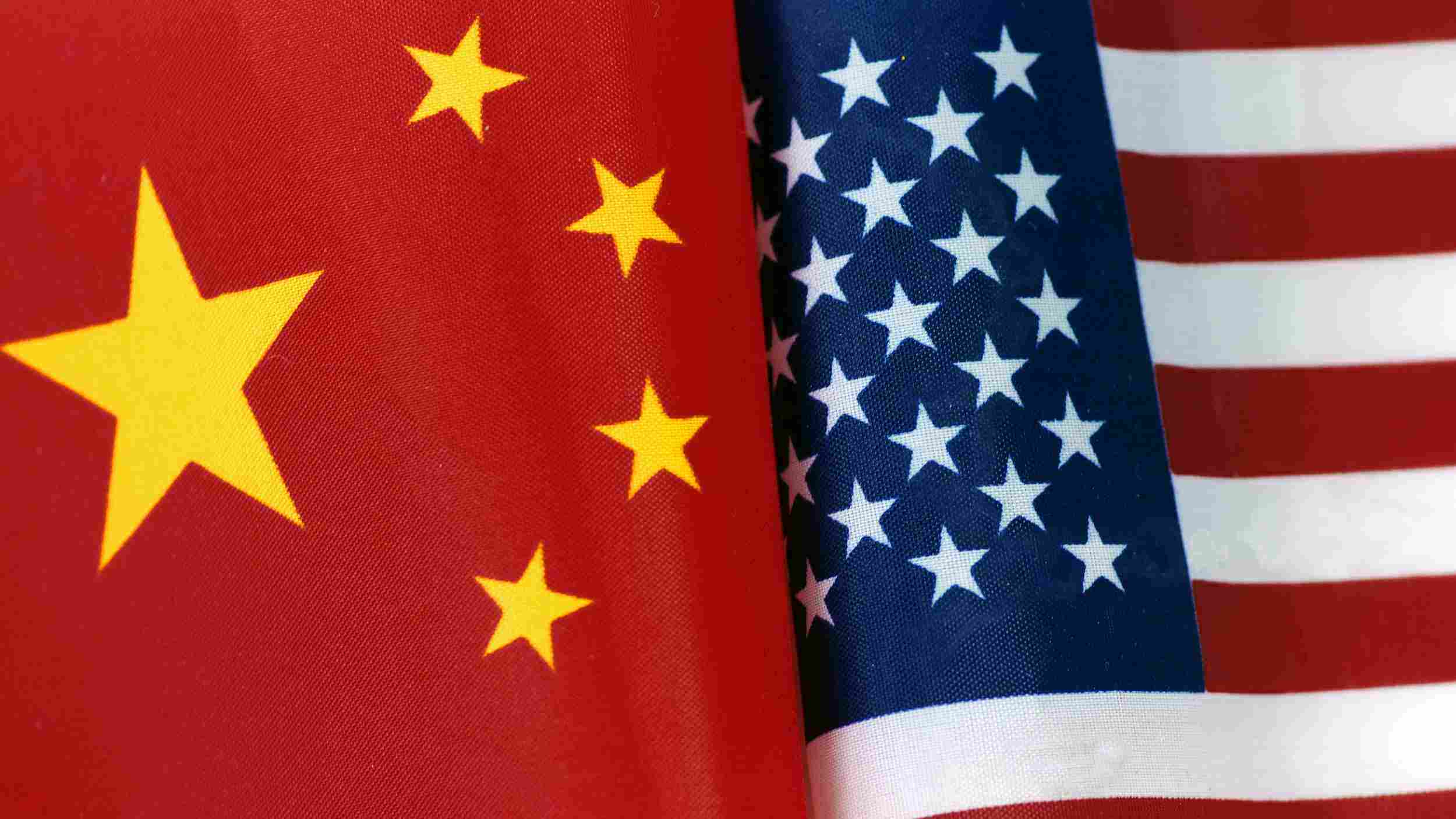
A port in Xiamen City, southeast China's Fujian Province, April 12, 2019. /VCG Photo
A port in Xiamen City, southeast China's Fujian Province, April 12, 2019. /VCG Photo
Editor's note: Azhar Azam works in a private organization as a market & business analyst and writes about geopolitical issues and regional conflicts. The article reflects the author's opinions, and not necessarily the views of CGTN.
Going through "psychoanalysis" of the foreign economists about the Chinese economy, it appears as if China's exports and imports were horribly cowed amidst the growing China-U.S. trade tensions albeit the latest lull between the two sides after U.S. President Donald Trump outlined what he called the first phase of the trade deal and suspended the looming tariff hike on Chinese goods.
No doubt, China's exports and imports have witnessed a decline in U.S. dollar terms by 3.2 percent and 8.5 percent respectively for September from a year earlier. However, the fall especially of exports in yuan terms were far lower at 0.7 percent.
Noticeably for the nine-month period of 2019, export figures in U.S. dollar were roughly flat at -0.1 percent while they actually picked up the pace in yuan terms by 5.2 percent.
In addition, beating all the analysts' forecasts, China trade surplus was inflated by 1.8 percent or 4.82 billion U.S. dollars to 39.65 billion U.S. dollars in September as compared to August, taking the year's trade glut to 298.43 billion U.S. dollars.
It was 34.8 percent or 77.05 billion U.S. dollars more than the January-September 2018 trade surplus. Chinese economy, therefore, still was resilient enough to absorb shocks from the trade war.
While the assessment by the U.S. economists expected "potentially significant job losses" in China's market from December this year until March 2020, the impact is unlikely to hit Chinese manufacturers as total trade and export of the second-largest economy in yuan terms rose considerably for the January-to-September period.
In a news conference on October 14, Chinese customs spokesperson Li Kuiwen confirmed that China's stable domestic economy had provided a strong cushion against external challenges, but warned that the future trade development is still "complicated and severe."

The Chinese yuan. /VCG Photo
The Chinese yuan. /VCG Photo
Moreover, though China's exports to the United States plunged by double digits (10.7 percent) in U.S. dollars for January-September, imports from its largest exports destination also fell by more than a quarter (26.4 percent).
So the retaliatory tariffs on billions of dollars of each other's goods, if harmed, should have battered both Chinese and American manufacturers and farmers and disrupted the global supply chains simultaneously.
China is a great contributor to the U.S. economy. For the January-August period of 2016, China became the largest goods trading partner of the U.S., surpassing Canada. But for the same period of 2019 when China was pushed down to become the third-largest U.S. trading partner, the American economy failed to report a trade growth.
For the same period of 2019 when China was pushed down to become third-largest destination of U.S. goods, the American economy also failed to report a trade growth.
Instead the U.S. economy suffered a significant blow as its eight-month total trade and exports withered for the first time since 2016. Thus, the strong China-U.S. trade ties are a guarantee of a more burgeoning American economy.
U.S. trade data shows that China was not the only country that endured a decline in the U.S. dollar-angled trade. Likewise, the impact was not circumscribed to Beijing and Washington alone as in its updated projection on October 1, the World Trade Organization (WTO) slashed its global merchandise trade growth forecast by more than a half, to just 1.2 percent from its prior April's prediction of 2.6 percent over the escalating trade war and weakening global growth.
The updated trade forecast was based on consensus estimates of world GDP growth of 2.3 percent for both 2019 and 2020, down from 2.6 percent previously.
Since Bloomberg's global GDP tracker anticipated that the pace of expansion has relaxed to 2.2 percent in the third quarter of 2019, down from 4.7 percent at the start of 2018, and the IMF is also likely to cut its global growth forecast on October 15 from 3.2 percent, seeing a "serious risk" and "synchronized slowdown" – attributing the downfall to the Chinese economy and trade only vitally lacks the wisdom and weight.

China-U.S. trade. /VCG Photo
China-U.S. trade. /VCG Photo
If it occurs, the worldwide economic go-slow will affect all the countries in the world without fail.
The Tracking Indexes for the Global Economic Recovery (TIGER), co-produced by the Financial Times and Brookings Institution, underscores that Chinese economy hasn't suffered as much as the trade war was likely to, China has shown greater pliability to withstand the shudders by posting impressive growth in yuan-based trade.
Report added that the global economy is giving way to a "synchronized stagnation" and could slide into first recession since 2009, which again would not be limited to China. It further said that the U.S. economy is presenting a "dichotomous picture."
TIGER underscored that the activities of manufacturing and services sectors in the U.S. were visibly going down over U.S. trade tensions with China and the European Union (EU) and uncertainties about trade deal with Canada and Mexico.
The U.S. tussles worldwide altogether had "sapped business confidence, hurt corporate profits, and led to a contraction of business investment" on its land itself.
Accordingly, the diverse forecasts about the global trade and economy are not a threat to China only but to the entire world, including the U.S. and the EU. These are the consequences of the needless trade frictions; China has been warning for a long time of avoiding a potential global economic meltdown.
If the trade war continues, neither China nor the U.S. will be the beneficiary of the arising outcomes. As the economies of the two countries are largely interdependent, any upswing in the trade relations will challenge the economic interests of both Beijing and Washington and the global growth, which is threatening to accelerate the slowdown and sliding into yet another recession.
(If you want to contribute and have specific expertise, please contact us at opinions@cgtn.com.)